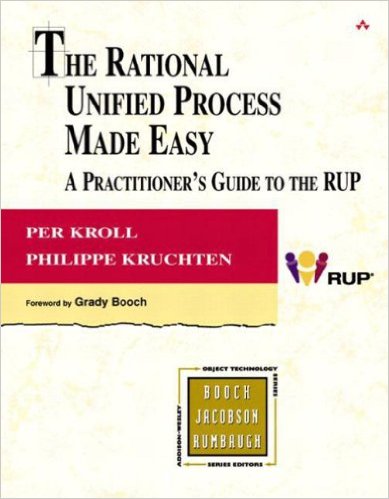The Rational Unified Process Made Easy: A Practitioner’s Guide to the RUP

It’s very in vogue to describe your software development process as RUP. Describing the current methodology as agile (XP, Crystal, Scrum, etc.) evokes too many questions, but describing the methodology as Rational Unified Process, more frequently RUP, leads to fewer questions but puts you ahead of those who are still running a waterfall process. However, in many cases RUP isn’t really the methodology being used, it’s simply renaming some of the processes and artifacts that were done for waterfall with new names.
The beauty of the book The Rational Unified Process made Easy: A Practitioner’s Guide to the RUP is that focuses not on enumerating the artifacts that one might use with RUP but rather focuses on the core concepts, fundamental precepts, and spirit of RUP. In this way it intentionally steers the reader away from the natural tendency to try to implement every artifact, to create the highest ceremony process possible. It provides a balanced view on how to utilize RUP to run effective, successful software development projects.
It also contains a role-by-role review of RUP. This provides a view of the process from each role’s perspective. The benefit of this is to condense the amount of training that must be done to get everyone working on the same page. While they can not be considered a direct replacement for training, the chapters are a good start to helping the team member understand what RUP is all about.
Even in a world enamored with agile, RUP still has it’s place. It’s proven for larger projects, and provides a path to an iterative model — essential to every form of agile development. If you’re trying to get to agile RUP is a good stopping point along the way — and the book The Rational Unified Process Made Easy is a good way to understand how to do RUP.
